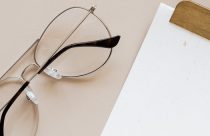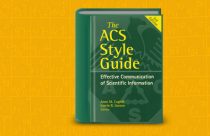A Quick Guide on Using Vancouver Referencing and Citation Style

Citation methods vary by academic discipline. Science and medicine have its own preferred style. Vancouver referencing and citation style is a numbered referencing system that follows the rules established by the International Committee of Medical Journal Editors (ICMJE). Read on to learn how to cite your sources correctly using this style.
Vancouver Referencing Basics
You should always use an in-text citation when you are paraphrasing or directly quoting someone else’s work. In Vancouver style referencing and citation, in-text citations are indicated by Arabic numerals (1,2, 3, 4, 5,6,7,8,9). Each reference should be given a unique number that corresponds to the order in which it is cited. When the same work is referenced more than once, use the same number each time.
The placement of the number within the text is up to the individual author or journal. Numbers can be placed within the text, or at the end before or after the period. Brackets or parentheses are both fine. Superscripts can also be used. Just make sure you remain consistent throughout your paper.
Let’s look at several examples, all of which are correct.
- Recent research (1) indicates that calorie counting is an effective way to maintain long-term weight loss.
- Recent research1 indicates that calorie counting is an effective way to maintain long-term weight loss.
- Recent research indicates that calorie counting is an effective way to maintain long-term weight loss (1).
If you use the author’s name in the text, you should still include the citation number.
Blakely (2) notes that previous researchers failed to take age difference into account.
When quoting directly from a print source, you should use single quotation marks and include the page number that you are citing. The page number should follow the quote.
According to Schumann [4], ‘long-term weight loss is sustained through a variety of behavior modification techniques (p.17).’
Note that when you cite different publications by the same author in the same year, each publication should get its own unique reference number.
Multiple Author and Multiple-Source Citations
If a work has more than one author, and you wish to include the name of the author(s) in the text, you should use the last name of the first author followed by “et al.” For a work written by Simon, Blakely, and Faust, the in-text citation would be as follows:
Simon et al. [3] found that mice who were fed a diet high in sugar ate more on average than mice who were not.
When citing multiple sources in a sentence, include the reference numbers for each source in the citation. The numbers should be separated by commas with no space in between.
Previous research [3,7,10] also confirms that diets high in sugar contribute to a decrease in the production of the ‘satiety’ hormone ghrelin.
Consecutive numbers should be separated by a dash.
Decreased ghrelin is associated with increased appetite and weight gain (7-9, 14).
Keep in mind is that in-text citations do not vary according to the type of publication that is being cited. No matter whether you are citing a journal article, book, DOI, URL (weblink), report, or other type of publication, the in-text citation is a number.
The exception to this is the items that are unpublished (correspondence, interviews, emails, and so on). Here, you should cite the name of the person and date of communication in parentheses in the text. For example:
Patient-physician confidentiality plays an important role of building trust and increasing the likelihood a patient will follow their physician’s advice, (Jake Smith, December 13, 2007) which can save lives (8).
Do not include this citation in your reference list.
Composing Your Reference List
The final page of your work should be titled “References” and list all of your sources in the order they are cited in the text. A complete list of guidelines can be found here. For now, some key items to keep in mind are:
- Books and journal names should not be italicized or placed in quotation marks. Journal titles are abbreviated. You can find a guide to these abbreviations in the NLM Catalog.
- The symbol “&” should never be used between author names.
- You should only use a capital letter for the first word of a sentence and words that are usually capitalized.
- Page numbers should be abbreviated to “p”. For example, pages 12-37 would be written as p. 12-37.
- In the reference list, “et al” should only be used when there are more than six authors. In this case, list the first three authors followed by “et al”. So, a publication written by Dewey, Cheatham, Howe, Macklin, Ryan, and Choi, would be written in the reference list as “Dewey, Cheatham, Howe et al.”
Let’s look at several examples of different types of publications as they should be written on a Vancouver style reference list.
Book: Armitage P, Berry G, Matthews JN. Statistical methods in medical research. John Wiley & Sons; 2008 Apr 15.
Journal Article: Powell C. The Delphi technique: myths and realities. Journal of advanced nursing. 2003 Feb 1;41(4):376-82.
Electronic Journal Article: Aho M, Irshad B, Ackerman SJ, Lewis M, Leddy R, Pope T, et al. Correlation of sonographic features of invasive ductal mammary carcinoma with age, tumor grade, and hormone-receptor status. J Clin Ultrasound [Internet]. 2013 Jan [cited 2015 Apr 27];41(1):10-7. Available from: http://onlinelibrary.wiley.com/doi/10.1002/jcu.21990/full DOI: 10.1002/jcu.21990
Did this article help you with your Vancouver style citations and references? What are some other challenges you have in using citations? Let us know in the comments!










Very informative piece. I have learned a lot about citations.
Very nice
Thanks, great piece